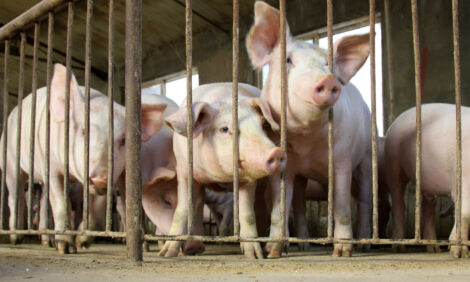



Market Preview: Sausage Market Fundamentals
US - Weekly US Market Preview provided by Steve R. Meyer, Ph.D., Paragon Economics, Inc.First an errata — US sow slaughter plants can handle roughly 100,000 head/week—not “per day“ as I wrote last week. That rate assumes five-day operations at all plants. A couple of industry insiders pointed out that some sow plants do not slaughter five days a week and that, therefore, a realistic sow slaughter capacity is 80,000 to 85,000 “per week,“ which is still well above current slaughter levels.
USDA announced last week that it would purchase $30 million worth of pork products for public feeding programs, well short of the $50 million purchase that had been requested by the National Pork Producers Council (NPPC). USDA cited federal budget constraints.
There has been no response to NPPC’s request for the release of Section 32 moneys to fund further pork purchases. Congress imposed an annual limitation on Section 32 expenditures in the last round of budget negotiations, since the limits drove a lower budget impact score from the Office of Management and Budget. Low prices for everything from milk to fruits this year have driven Section 32 expenditures to their limit.
The product to be bought with the $30 million was not specified by USDA. Some had asked for USDA to buy product from cull sows in an effort to increase the incentive to slaughter sows. No such specification was included, though there is talk that preference may be given to sow product. The most popular product in the spring USDA buy was a pre-cooked pork patty that could be made of either sow or butcher hog trimmings.
With 72 per cent Chem Lean Trimmings prices in the $30s/cwt. – a shocking 64 per cent lower than one year ago and 40 per cent lower than the five-year average (Figure 1)—there is no way that a purchase involving trimmings cannot help, regardless of where the product comes from. Adding value to butcher hog trimmings will help producers as well – especially since we finally seem to have sow liquidation underway.

Sow vs. Market Hog Prices
I get questions all of the time about the nature of sow product and the sow market, which is, in my opinion, less and less tied to butcher hog markets. It appears from Figure 2 that sow prices and butcher prices began to separate from one another back in 2006, when market hog prices rallied in the summer and sow prices remained relatively stable. That, in itself, is not a surprise since the seasonal pattern for sow prices is different with a far smaller summer peak and a much smaller fall bottom – due primarily to lower sausage demand in the summer and higher sausage demand in the fall.
What is different about Figure 2 is that the relationship between sow and market hog prices has been so erratic since early 2008. Recall near record low sow prices that spring when producers wanted to sell sows instead of feeding them near-record expensive corn. Then, last fall, sow prices got much closer to market hog prices on a monthly basis and even exceeded them on many days when record exports and falling corn prices led some to believe the crisis had passed. That tighter relationship remained until June, when sow prices finally separated from butcher hog prices once more.

Fundamental to these relationships is the fact that many of these critters are used for very unique products. Heavy sows are almost all hot-boned to yield pre-rigor pork products that have markedly different characteristics from butcher hog trim. The lean is darker and the texture of ground pre-rigor product is much more “crumbly“ than product made from trimmings. On this last point, an illustration is helpful.
I have not eaten a breakfast biscuit at a Hardee’s restaurant in some time, as there just aren’t many left in Iowa. But the last time I did, the sausage on that biscuit had a soft, crumbly texture. You can get the same idea from any premium whole-hog sausage that you prepare at home.
Now think about the sausage on a McDonald’s biscuit. It’s good sausage, too, but the texture of the sausage I get (and I think this is true of almost all McDonald’s sausage) is much different. It is chewy, not crumbly, and it is made from butcher hog trimmings. The animals and the way they are processed make a huge difference in product characteristics.
What does this diversion into meat science mean? It means that different critters have different uses and, thus, their prices are driven by different forces. Sow prices were not buoyed by the export explosion of 2008, because sow products were not, in general, part of the growth. Sow prices did not fall as much in late 2008, because demand for whole-hog premium sausage usually rises in the fall when kids go back to school, more people eat breakfast and the weather cools.
Sow slaughter companies did not ramp up sow slaughter this summer when sow prices fell because demand for their unique products was soft – partly due to broader pork and meat market issues, but largely due to normal seasonal influences. Now, sow slaughter is larger because producers have finally decided to sell and sow slaughter companies are entering the time of year that they can move more product at profitable prices.









